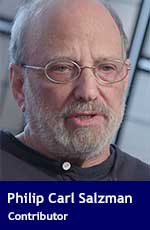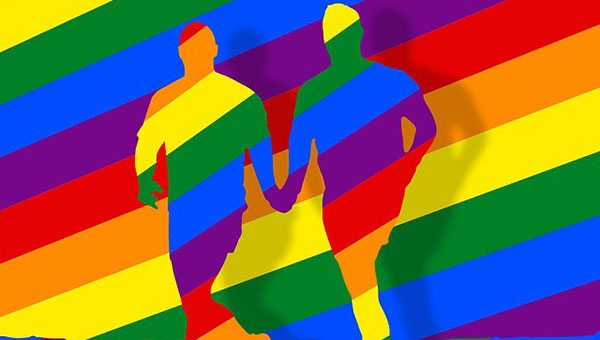 Television programs not only entertain, they also influence our ideas about society and culture. These messages aren’t meant to solely and accurately reflect social reality – they’re also meant to shape that reality.
Television programs not only entertain, they also influence our ideas about society and culture. These messages aren’t meant to solely and accurately reflect social reality – they’re also meant to shape that reality.
People and their actions and opinions are presented as if they’re typical and to be emulated. These programs offer a view of what’s desirable and undesirable.
One strategy is to overrepresent certain segments of the population so as to normalize their presence and worthiness.
More than half of a recent episode of 911 called Karma’s a Bitch dealt with the experiences of a black female police officer and a black female paramedic. The message is that black females are important, which is fair enough. But, by implication, the message is also that others are less important. So too with gays and lesbians. The paramedic is a lesbian. The black husband of the police officer is trying to deal with the fact that he’s gay and has found a new lover. Gays and lesbians are also prominent in Six Feet Under, Modern Family, Will and Grace, and CBC’s Burden of Truth, Schitt’s Creek and Workin’ Moms, among others.
It’s true that a portion of our population is black, and gay and lesbian, but these programs overrepresent blacks and gays. Blacks in the U.S. make up 13.3 per cent of the population. But Americans overestimate the percentage of blacks: the average guess is 33.3 per cent and 17 per cent of Americans say that blacks make up more than 50 per cent of the population. Only 3.6 per cent of Americans identify as LGBT, although many Americans give much higher estimates. In Canada, 1.7 per cent of the population identifies as gay and lesbian, and 1.3 per cent identifies as bisexual.
But there were also whites portrayed on the Karma’s a Bitch episode. One was a white heterosexual male, a puppy abuser who was roasted in a malfunctioning tanning bed. A second was a white heterosexual male who abused his wife and who was killed by a bullet shot into a tree by his wife, who then committed suicide. A third was a white heterosexual male hunter of protected species who was eaten alive by a zoo tiger that he had abused. One of the main characters of the show is a white male ex-drug addict whose negligence had caused a fire that killed his wife and children.
Do you see a pattern here?
Black females and gays are presented in a sympathetic manner, while white heterosexual males are presented as violent abusers who victimize women and animals, and consequently deserve the gruesome deaths that they eventually suffer.
Behind these crude characterizations is the ideology of social justice, which divides the world into victims and their oppressors, leaving aside the minor details of what actual human individuals do and don’t do. Social justice identifies large classes of people by gender, race, sexual proclivity, nationality and religion as the objects of its judgment.
The moral imperative of social justice is to aid the oppressed and undermine the oppressors. The oppressors must be shown to be unworthy and immoral, and as a result they should be marginalized and penalized. The oppressed must be shown to be worthy and virtuous, and should receive special benefits, especially advantage over oppressors.
‘Affirmative action’ refers to measures to raise people of the oppressed categories and consequently lower people of the oppressor categories. What better way to lobby for these goals than implicitly through entertainment, from which viewers absorb the moral message.
Rise is a program about a discouraged high school English teacher who takes over the school’s drama program. The first thing he does is demote the acknowledged student acting and singing stars in order to promote a female Hispanic and a black male football player. It’s unthinkable in today’s social justice climate that he would demote an Hispanic and a black and replaced them with whites. The white families of the demoted stars are shown to be, in one case, status-seeking and closed-minded and, in the other, rigid Christians who try to discourage their son from portraying a gay character. Another actor promoted is a white female transitioning to a male.
Here and Now offers observers viewers a ‘diverse’ model family: two white parents, an adopted black female child, an adopted South American gay male child, and an adopted male Vietnamese child, and a sad biological female child. The birth child’s good friend is a male, but presents himself as a gender neutral, Muslim cross-dresser. His family is Persian and Muslim, and the mother appears quite religious. One other interesting character presented as admirable is the imam of that family’s mosque, who is a white, male and of European descent, and apparently a convert.
My two children were adopted from Thailand and China. I have no objection to international and cross-racial adoptions, but I wouldn’t present my family as ideal or representing the statistical norm for Canada. Nor would I imply that white families that produced children the old-fashioned way are somehow deficient in diversity.
Even the new Roseanne show, with Roseanne as the stalwart enemy of political correctness and defender of President Donald Trump, features a cross-dressing boy (her grandson) who identifies as male but likes wearing women’s clothes, and a sympathetic mother (her daughter) who proclaims that children should be allowed to be “who they are” and not forced to live as something they aren’t.
Of course, there’s no reason why individuals of every racial, gender, sexual, religious, economic and national category should not be represented, and portrayed sympathetically in entertainment programs. It is perfectly reasonable that people of every category should be the main characters in some programs.
But are we content that mainstream entertainment programs have a hidden ideological agenda, advancing some categories of people over others? Does demonizing white people, males, heterosexuals, Christians and those of western ancestry improve our society and our lives?
Philip Carl Salzman is professor of anthropology at McGill University, senior fellow at Frontier Centre for Public Policy, and fellow of the Middle East Forum.
The views, opinions and positions expressed by columnists and contributors are the author’s alone. They do not inherently or expressly reflect the views, opinions and/or positions of our publication.

